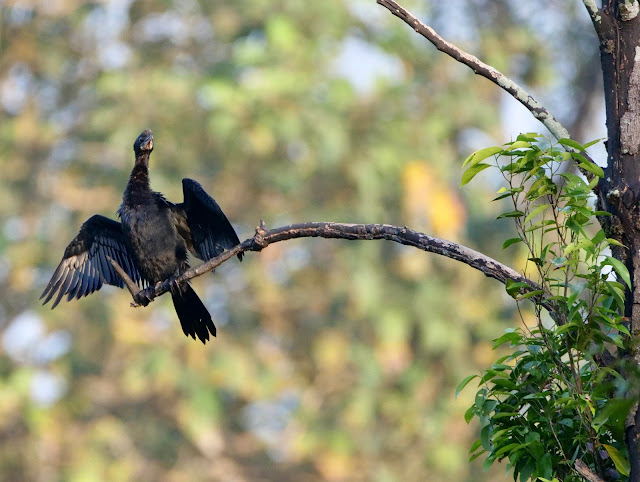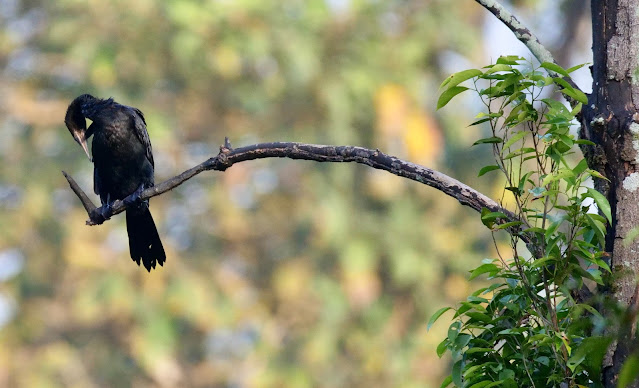Although this Cormorant is perched refreshing itself in the morning sunshine while grooming, it has a chosen a spot from where it can observe the movements of fish in the pond below. It was in its regular site, waiting for the right time to fly down and plunge in to the water, to get its feed of fish. I am yet to capture this in the photo sequences.
As its flying into water is frequent, it dries and oils the wings and feathers after each dive into the water.
This water bird is different from Egret and Heron as it has to largely depend on the fish for its feed.
The web on its toes facilitates the swimming movement in water.
What fascinates me about this water bird is its vigilance and briskness to respond to reach its prey. On one occasion I watched fish movements near the surface of water. Before I knew anything else, the Cormorant was in the water, dipping under the water and chasing the fish. Its quick body movements is its distinguishing trait. Every species of bird has its own distinct features for its survival and hunting for food.
The mystery of habits and rituals of most avians are conditioned by the necessity to adapt to its environment.
The two bulbuls who come to feed from the feeder, come when there are no human movements. But they got used to Anna and myself that they would call out for us with bird calls, in case we forgot to leave banana, which is their favourite morning feed.
I find how sobering it is to get familiar with the habits of some birds, from which we get to know about their overcoming ways. Birds make us think differently.
One advice we received when we came to live in this cottage 11 years ago, was to plant bushes and shrubs in the garden. There were tall trees for larger birds. Since we did that we have a lot of smaller birds regularly visiting us in the garden.
The birds are feathered friends !
M.C.Mathew(text and photo)







No comments:
Post a Comment